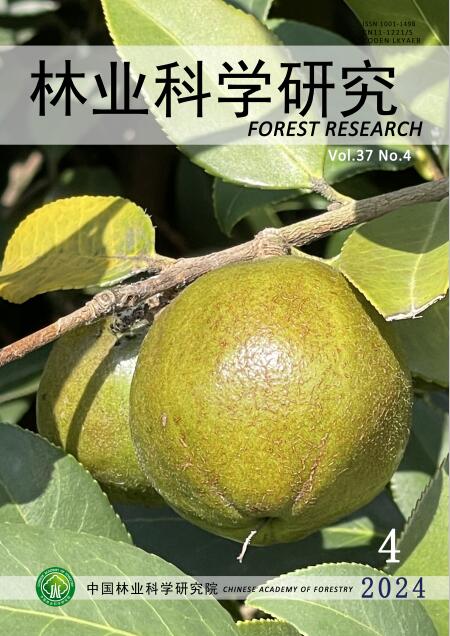Validation of the Ability of Selected Medicinal Plants to Control Bacterial Diseases as Applied by Local Herbalists in Kaya Tsolokero and Kaya Kauma of Kenya
Q4 Agricultural and Biological Sciences
引用次数: 0
Abstract
An ethnobotanical study was carried out in the sacred Kaya forests of Kauma and Tsolokero of Kilifi County in Kenya. Ethnobotanical data on useful and medicinal plants was collected. Communities living around these two forests depend on the diversity of flora for their livelihood. The local herbalists use indigenous trees and shrubs to heal a variety of diseases. The communities have knowledge to prepare a variety of medicinal formulations to treat diseases which have been passed down through generations. In this study, twelve medicinal plants were selected and tested to validate their ability to control conditions caused by Escherichia coli and Staphylococcus aureus. Formulations from these twelve plants were prepared using a protocol that was adopted from the local medicinal practitioners. The formulations were used in the laboratory to inhibit the growth of S . aureusand E. coli using the dual plating method. Some of the perceived medicinal plants by the practitioners and the community exhibited medicinal properties with very clear growth inhibition zones. Mildbraedia carpinifolia (Mfundiran'gambi), Vernonia homilantha (Mlazakoma), Solanun incannun (Mtondo) and Senna siamea (Mchilifi) against S . aureuswhile, Zanthoxylum chalybeum (Mdungu) and Croton pseudophulchellum (Myama wa nyika) had activity against Escherichia coli. Results in this study validated the medicinal properties of the local formulations of some of the tested plants as applied by the local herbalists.肯尼亚Kaya Tsolokero和Kaya Kauma当地草药应用的精选药用植物控制细菌性疾病的能力验证
在肯尼亚基利菲县Kauma和Tsolokero的神圣的卡亚森林进行了一项民族植物学研究。收集了有用和药用植物的民族植物学资料。生活在这两个森林周围的社区依靠植物的多样性维持生计。当地的草药医生用当地的树木和灌木来治疗各种疾病。这些社区拥有制作各种药物配方来治疗世代相传的疾病的知识。本研究选取了12种药用植物,对其控制大肠杆菌和金黄色葡萄球菌引起的疾病的能力进行了测试。这12种植物的配方是根据当地医生采用的方案制备的。该配方在实验室中用于抑制S。金黄色葡萄球菌和大肠杆菌采用双镀法。一些医生和社区认为的药用植物具有非常明显的生长抑制带。米尔布拉迪亚·卡皮利亚(mfunddiran’gambi), Vernonia homilantha (Mlazakoma), Solanun incannun (Mtondo)和Senna siamea (Mchilifi)对阵S。金黄色葡萄球菌(aureus)、白花椒(Zanthoxylum chalybeum)和巴豆(Croton pseudophulchellum Myama wa nyika)对大肠杆菌有活性。本研究的结果验证了当地草药师使用的一些被测试植物的当地配方的药用特性。
本文章由计算机程序翻译,如有差异,请以英文原文为准。
求助全文
约1分钟内获得全文
求助全文
来源期刊

林业科学研究
Environmental Science-Ecology
CiteScore
0.90
自引率
0.00%
发文量
4834
期刊介绍:
Forestry Research is a comprehensive academic journal of forestry science organized by the Chinese Academy of Forestry. The main task is to reflect the latest research results, academic papers and research reports, scientific and technological developments and information on forestry science mainly organized by the Chinese Academy of Forestry, to promote academic exchanges at home and abroad, to carry out academic discussions, to flourish forestry science, and to better serve China's forestry construction.
The main contents are: forest seeds, seedling afforestation, forest plants, forest genetic breeding, tree physiology and biochemistry, forest insects, resource insects, forest pathology, forest microorganisms, forest birds and animals, forest soil, forest ecology, forest management, forest manager, forestry remote sensing, forestry biotechnology and other new technologies, new methods, and to increase the development strategy of forestry, the trend of development of disciplines, technology policies and strategies, etc., and to increase the forestry development strategy, the trend of development of disciplines, technology policies and strategies. It is suitable for scientists and technicians of forestry and related disciplines, teachers and students of colleges and universities, leaders and managers, and grassroots forestry workers.
 求助内容:
求助内容: 应助结果提醒方式:
应助结果提醒方式:


